A top-level domain (TLD) is one of the domains at the highest level in the hierarchical Domain Name System of the Internet after the root domain. The top-level domain names are installed in the root zone of the name space. For all domains in lower levels, it is the last part of the domain name, that is, the last non empty label of a fully qualified domain name. For example, in the domain name www.example.com, the top-level domain is .com. Responsibility for management of most top-level domains is delegated to specific organizations by the ICANN, an Internet multi-stakeholder community, which operates the Internet Assigned Numbers Authority (IANA), and is in charge of maintaining the DNS root zone.
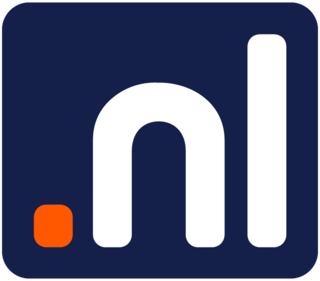
.nl is the Internet country code top-level domain (ccTLD) for the Netherlands. It is one of the most popular ccTLDs with over six million registered .nl domains as of 29 September 2020.
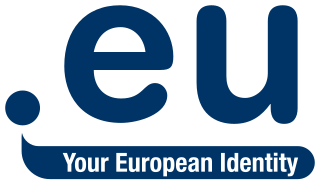
.eu is the country code top-level domain (ccTLD) for the European Union (EU). Launched on 7 December 2005, the domain is available for any person, company or organization based in the European Union. This was extended to the European Economic Area in 2014, after the regulation was incorporated into the EEA Agreement, and hence is also available for any person, company or organization based in Iceland, Liechtenstein and Norway. The TLD is administered by EURid, a consortium originally consisting of the national ccTLD registry operators of Belgium, Sweden, and Italy, joined later by the national registry operator of the Czech Republic. Trademark owners were able to submit registrations through a sunrise period, in an effort to prevent cybersquatting. Full registration started on 7 April 2006.
A country code top-level domain (ccTLD) is an Internet top-level domain generally used or reserved for a country, sovereign state, or dependent territory identified with a country code. All ASCII ccTLD identifiers are two letters long, and all two-letter top-level domains are ccTLDs.
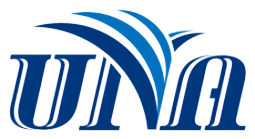
.an was the Internet country code top-level domain (ccTLD) for the former Netherlands Antilles. It was administered by the University of the Netherlands Antilles. The domain was phased out after the Netherlands Antilles were dissolved in 2010. As of November 2010 the .an domain remained live with over 800 domains registered under .an, including secondary levels. On 31 July 2015, use of the domain was discontinued.
.ax is the Internet country code top-level domain (ccTLD) of Åland, Finland, introduced in 2006. Previously, most Åland websites were under the .aland.fi subdomain.
.bv is the Internet country code top-level domain (ccTLD) reserved for the uninhabited Norwegian dependent territory of Bouvet Island. The domain name registry and sponsor is Norid, but .bv is not open for registration. .bv was designated on 21 August 1997 and was placed under the .no registry Norid. Norwegian policy states that .no is sufficient for those institutions connected to Bouvet Island, and therefore the domain is not open to registration. It is Norwegian policy not to commercialize domain resources, so there are no plans to sell .bv. Should the domain later come into use, it will be under the regulation of the Norwegian Communications Authority and follow the same policy as .no.
.yu was the Internet country code top-level domain (ccTLD) that was assigned to SFR Yugoslavia in 1989 and was mainly used by Serbia and Montenegro and its two successor states. After Montenegro and Serbia acquired separate .me and .rs domains in 2007, a transition period started, and the .yu domain finally expired in 2010.

.co is the Internet country code top-level domain (ccTLD) assigned to Colombia.
.kr is the Internet country code top-level domain (ccTLD) for the Republic of Korea. Registrations are processed via registration agents.

.na is the Internet country code top-level domain (ccTLD) for Namibia corresponding to the two letter code from the ISO-3166 standard.
.pg is the Internet country code top-level domain (ccTLD) for Papua New Guinea.

.rs is the Internet country code top-level domain (ccTLD) for Serbia. The domain name registry that operates it is the Serbian National Internet Domain Registry (RNIDS). The letters rs stand for Republika Srbija/Република Србија.
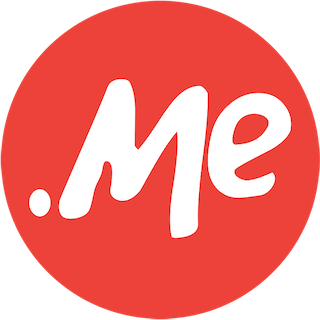
.me is the Internet country code top-level domain (ccTLD) for Montenegro.
.mf is an assigned Internet country code top-level domain (ccTLD) that was to be created for the Collectivity of Saint Martin, but it is currently not in use, as it is not available for registration nor website use of the domain. The decision by the ISO 3166 Maintenance Agency to allocate .mf as the ISO 3166-1 alpha-2 domain for Saint Martin on 21 September 2007, followed the decision of Saint Martin's new status as an Overseas collectivity of France, which took effect on 15 July 2007. Currently Saint Martin uses Guadeloupe's ccTLD, .gp and France's ccTLD, .fr.
ISO 3166-2:AN was the entry for the Netherlands Antilles in ISO 3166-2, part of the ISO 3166 standard published by the International Organization for Standardization (ISO), which defines codes for the names of the principal subdivisions of all countries coded in ISO 3166-1.

The Caribbean Netherlands is a geographic region of the Netherlands located outside of Europe, in the Caribbean, consisting of three so-called special municipalities. These are the islands of Bonaire, Sint Eustatius and Saba, as they are also known in legislation, or the BES islands for short. The islands are officially classified as public bodies in the Netherlands and as overseas territories of the European Union; as such, European Union law does not automatically apply to them.
.bq is designated—but not in use—as the Internet country code top-level domain (ccTLD) for Bonaire, Sint Eustatius and Saba following the assignment on December 15, 2010, by the ISO 3166 Maintenance Agency of BQ as the ISO 3166-1 alpha-2 to the area. This decision followed the dissolution of the Netherlands Antilles and new status of the Caribbean Netherlands as public bodies of the Netherlands on October 10, 2010.
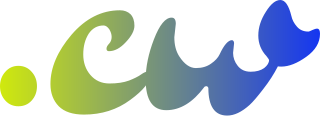
.cw is the Internet country code top-level domain (ccTLD) for Curaçao. It was created following the decision on December 15, 2010 by the ISO 3166 Maintenance Agency to allocate CW as the ISO 3166-1 alpha-2 code for Curaçao. This decision followed Curaçao's new status as an autonomous country within the Kingdom of the Netherlands on October 10, 2010. The University of Curaçao, which already was the sponsor for .an was designated as the sponsoring organization. Registration of .cw domains was available from 1 February 2012.
A landrush period is the time during which domain names are available for registration, usually to a closed group, to entities that do not own a trademark in the name they wish to register, for example generic terms like loan or car, and thus would not qualify for registration during the sunrise period. Orders may or may not be treated on a first-come-first-served basis. This period follows the sunrise period just after the launch of a new top-level domain or second-level domain during which, for example, owners of trademarks may register a domain name containing the owned mark, but a landrush period precedes a period of general availability, when any qualifying entity can register any name on a first come first-served basis.










